Powick - Where England's Troubles Began & Ended
- Jan 13, 2021
- 4 min read
The Church of St Peter and St Lawrence sits at the edge of the village of Powick. Dating from the 13th century it's a fine but otherwise unremarkable old church...until you see the east wall of it's tower. Not many English churches can boast a wall liberally peppered with musket shot! Why is this...and what's the story with that old bridge just down the road?
The city of Worcester is often credited as the place where the English Civil Wars both began and ended. This isn't technically true, as the village of Powick that lies just outside the city is actually “where England's sorrows began and where they are happily ended”. The first clash, while classed as a skirmish, was as intense and violent as any battle while during the second battle every hedgerow was fought for to the last man.
Before a flintlock had been fired in anger or a sabre drawn hurried preparations were being made around the country. Charles I was at Shrewsbury and had sent word for Sir John Byron to deliver a wagon train of silver to him, probably to pay the armies he was raising. The train stopped at Worcester for a couple of days and waited for reinforcements to escort them the rest of the way to Shrewsbury. A Parliamentarian force led by Nathaniel Fiennes was tasked with taking the silver and routing the Royalist men and headed to the city gates to try their luck. Incredibly the gate at Sidbury was rotten through and not even locked, all they had to do was push it open but this didn't happen, they settled for smashing a hole in it and firing a musket through the hole, before becoming bored and moving away.
Fiennes had abandoned the idea of besieging the city and decided instead to ambush the silver train as it went on it's way westwards to Shrewsbury. Prince Rupert of the Rhine was then tasked with escorting the wagons and averting this potential attack. Rupert made his way rapidly down through the county and across the Severn while Fiennes, believing Byron to have set out from the city, rushed with his men in a disorderly manner, desperate to engage, taking the old medieval bridge across the Teme at Powick. Prince Rupert was a superstar of the Royalist men, an expert swordsman and experienced cavalry leader, having fought as a teenager in the Thirty Years War and at this stage was supreme commander of the King's entire cavalry. He allowed his men to stop at Powick for a while and rest, dismounting and sitting under a huge tree while their horses fed. No sentries were set.
Amazingly, Fiennes cavalry rode across the narrow Powick bridge, so narrow that only two horses could fit abreast, and began to emerge into the very field that Prince Rupert and his forces were chilling in! Something caught Rupert's attention causing him to look intently at the gap in the hedges that was concealing them...to his horror he saw Roundhead horsemen just coming into the field. With a simple bellow of “Charge!” he leapt onto his horse, drew his sabre and attacked, his men charging after him. Fiennes's men froze in shock, inaction holding them motionless. Panic ensued, they tried to turn and escape, crashing into the men and horses behind them. The Terror of the Rhine was upon them. Hatless and instantly recognisable, Rupert slashed, stabbed and hacked his way into the chaos, emerging with not a single injury...with his pet poodle apparently yapping around his horse's hooves. The narrow width of the bridge was the doom of the Roundheads, men were being crushed under the horses of their own side, others fell off the bridge into the water, and as the survivors of this lightning attack finally got off the bridge they trampled dozens of their own men under them as they fled.
The entire company rode as if the devil himself was behind them all the way to Pershore where the main force was camped. Accounts say that such was the fear on their faces many of the resting Roundheads seeing them approach joined in their flight. The silver eventually set off again, arriving in Shrewsbury with no further incident.
Fast forward nine years to the same month of September. Charles II is now at Worcester, his dream of revenge for his father's death and to take the throne slipping away as almost the entire Parliamentary force approached the city with Oliver Cromwell himself in command. Again, Powick was where the battle began. Every field, every building was defended to the last as the Royalists fought a desperate rearguard action, having been ousted from Upton on Severn by none other than future ghost Captain Bound, subject of one of my earliest posts. What has this to do with the bullet holes in the church tower? A group of men were using the top of the tower to observe the movements of the approaching Roundheads, signalling to others on the ground with flags and shouts. To deter them and to encourage them to leave, the Parliamentarians brought a small bore cannon up and fired it repeatedly at the tower. What you see there was for years presumed to be the effects of a possible firing squad of muskets but modern ballistics and research has shown the shot to be from one of these small, usually brass, cannons. Why the wall was never repaired is anyone's guess.
Preacher Hugh Peters addressed Cromwell's victorious army with a joyful sermon, ending with this epithet - “When your wives and children ask you where you have been, tell them you have been at Worcester, where England's sorrows began, and where they are happily ended.”
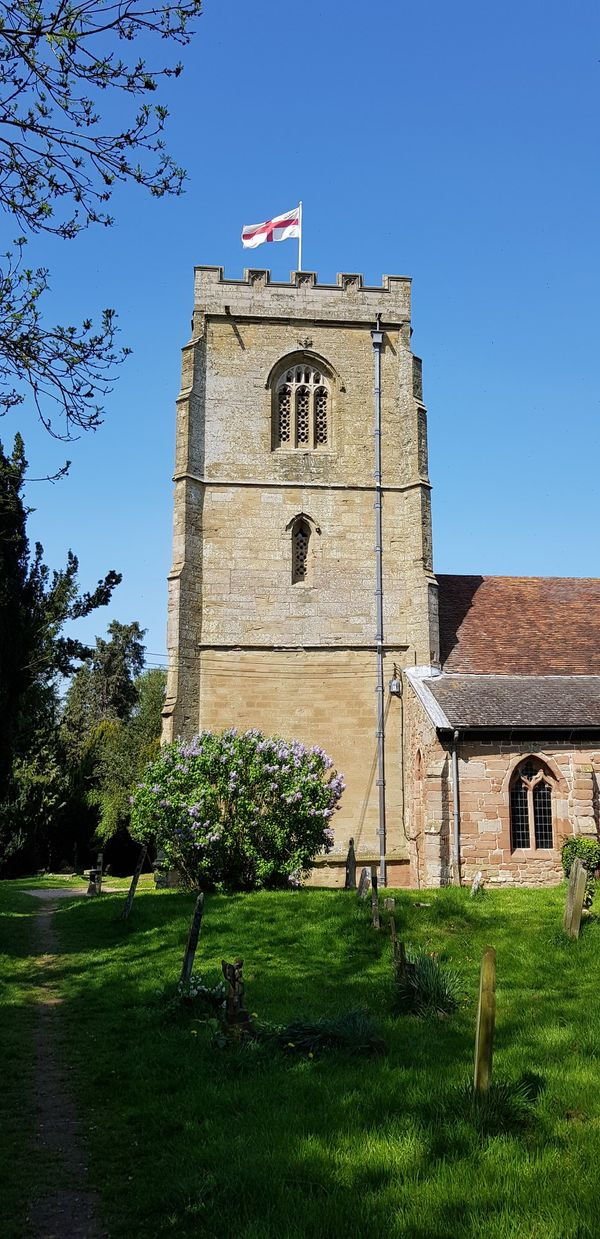
The Church of St Peter and St Lawrence
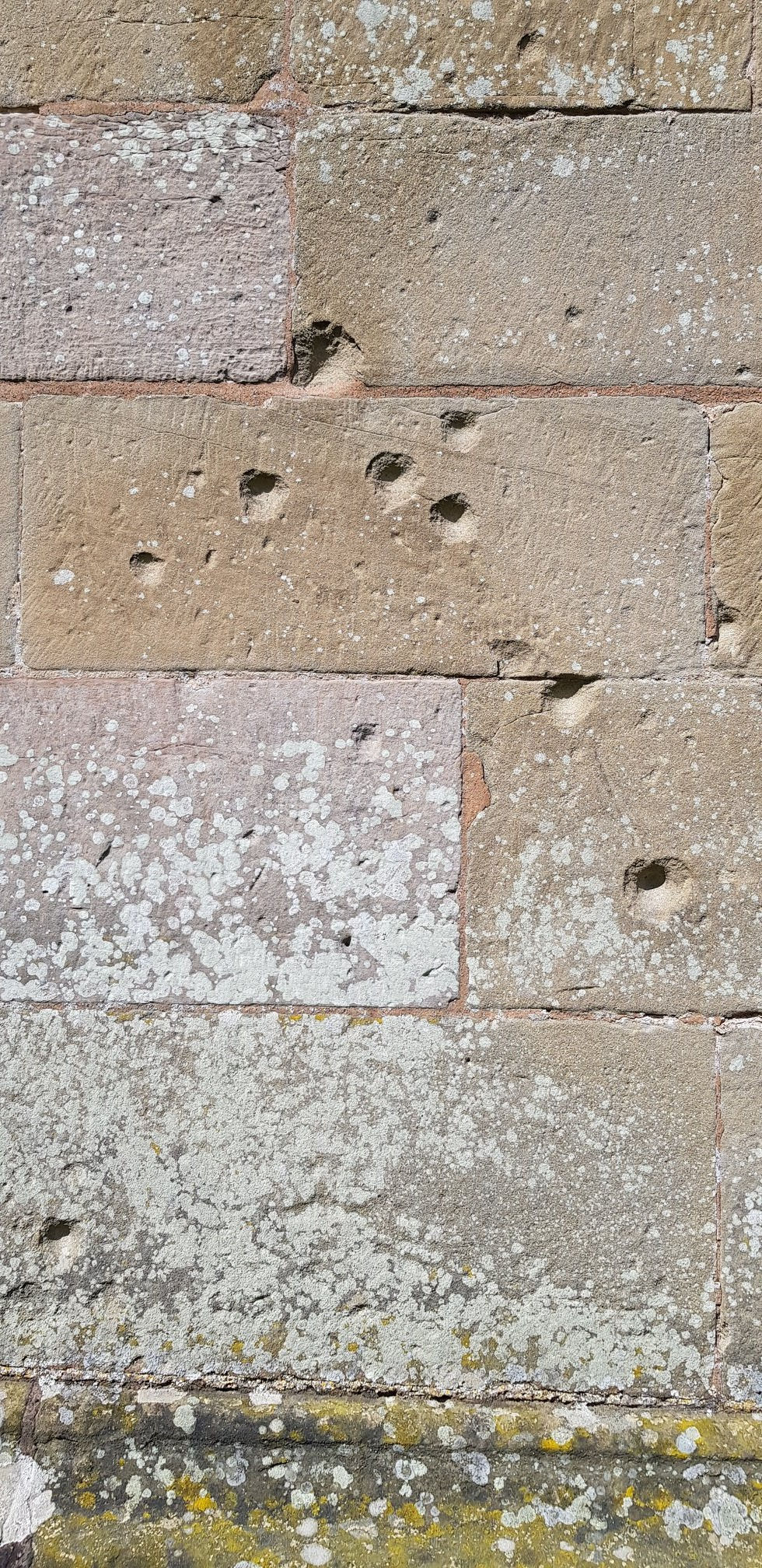
Musket shot or cannon shot in the tower wall
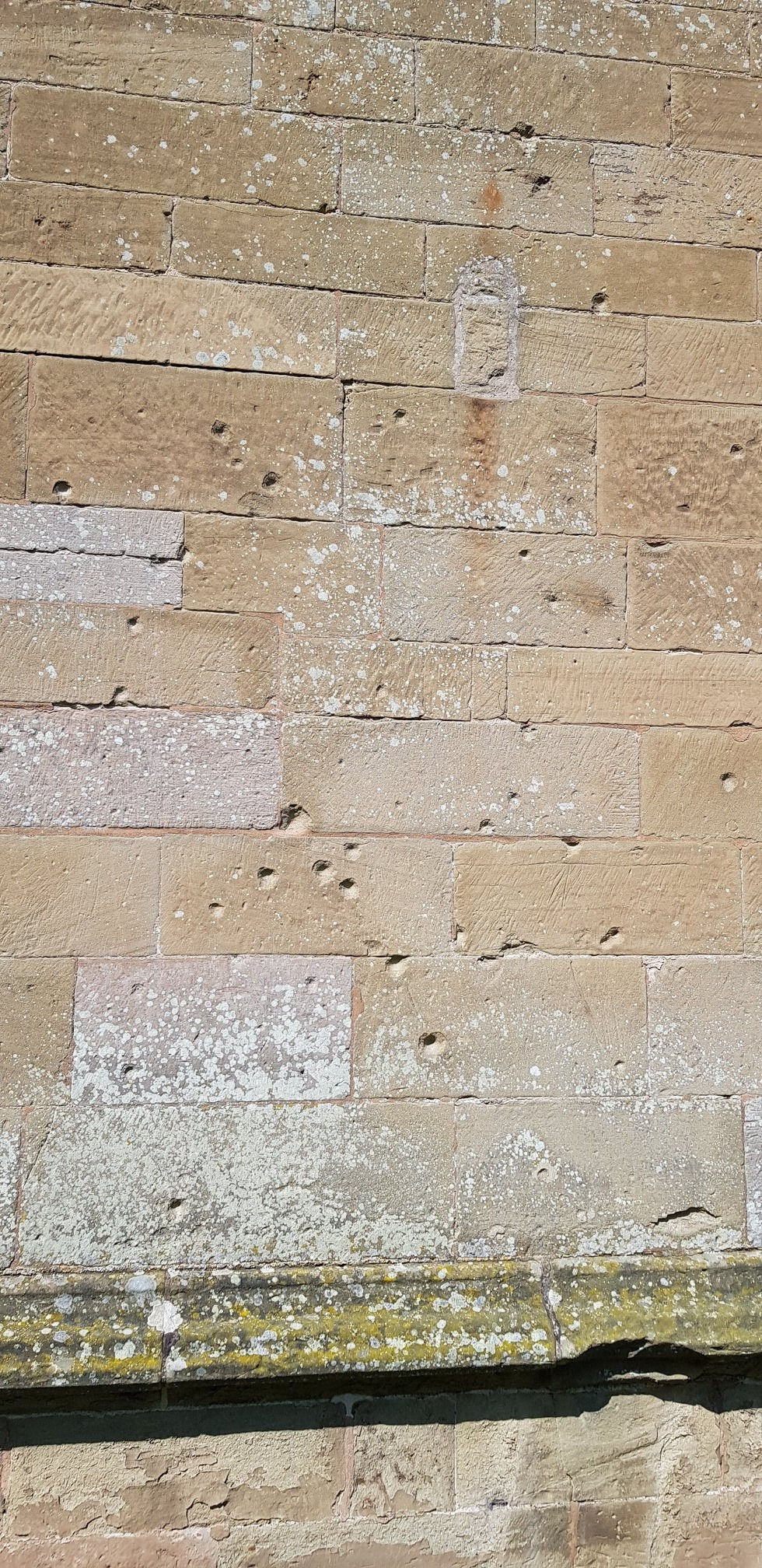
The tower wall
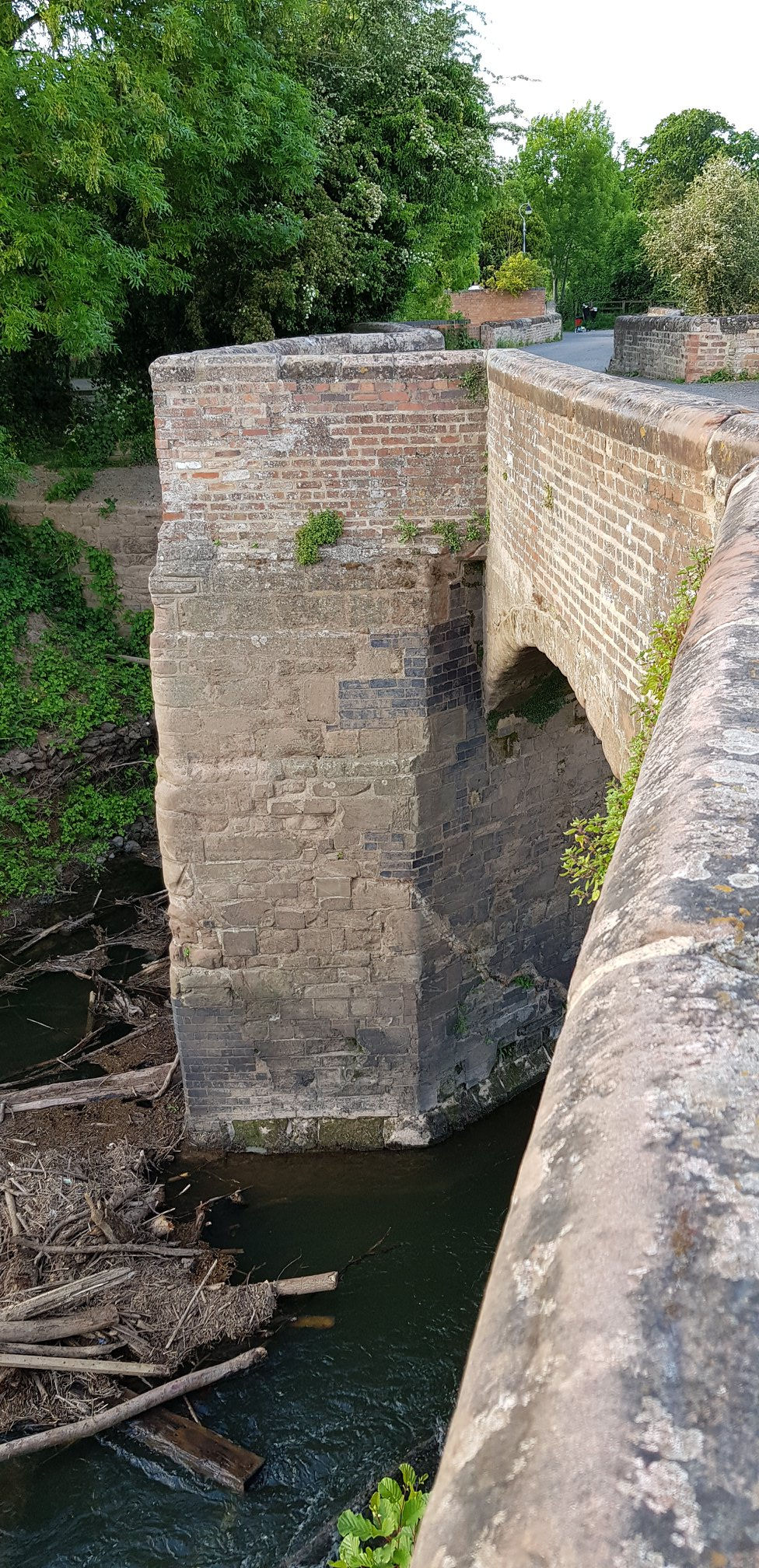
The bridge at Powick, virtually as it was in 1642
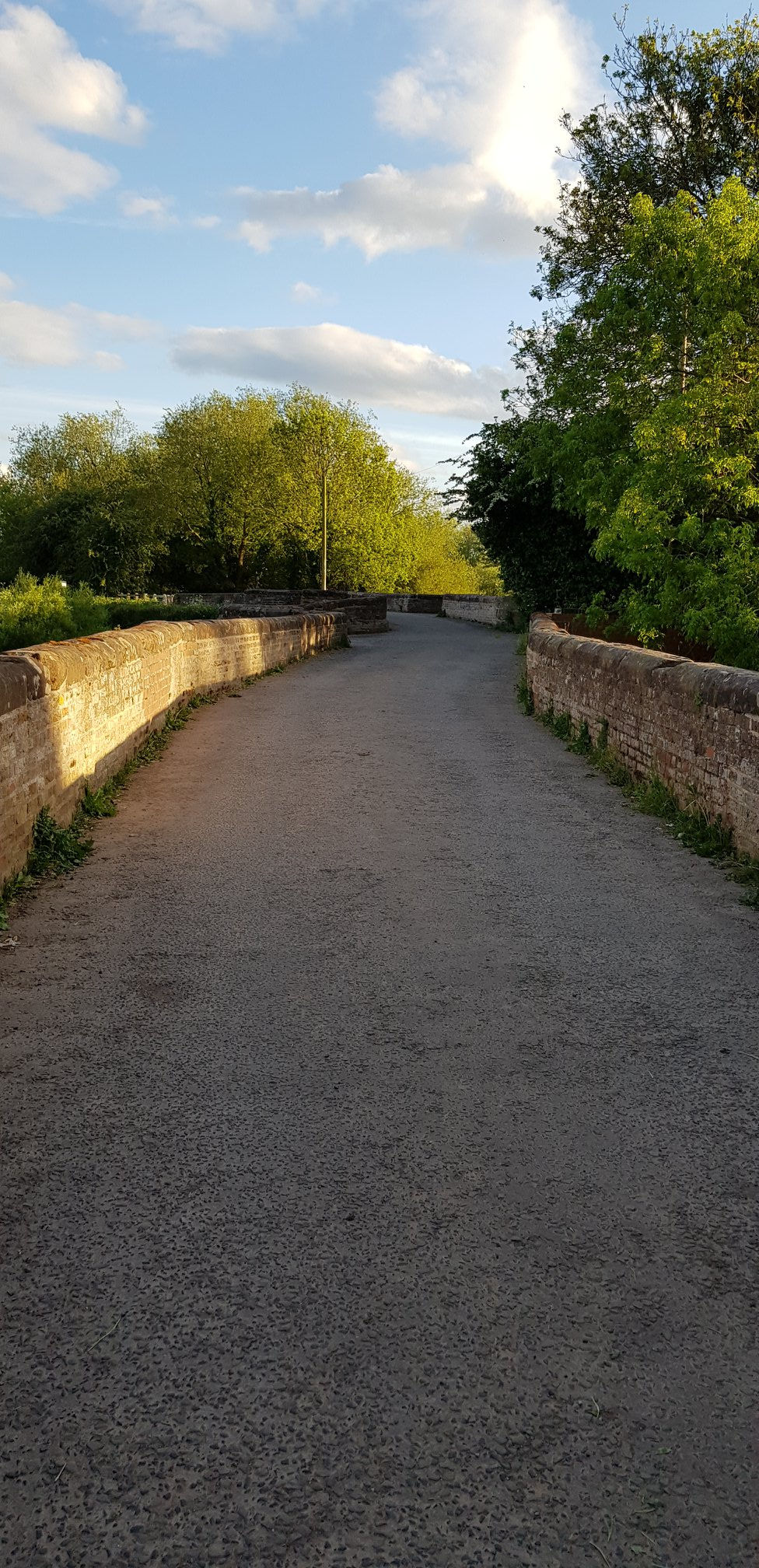
The way across the bridge, barely room for two horses abreast as you can see
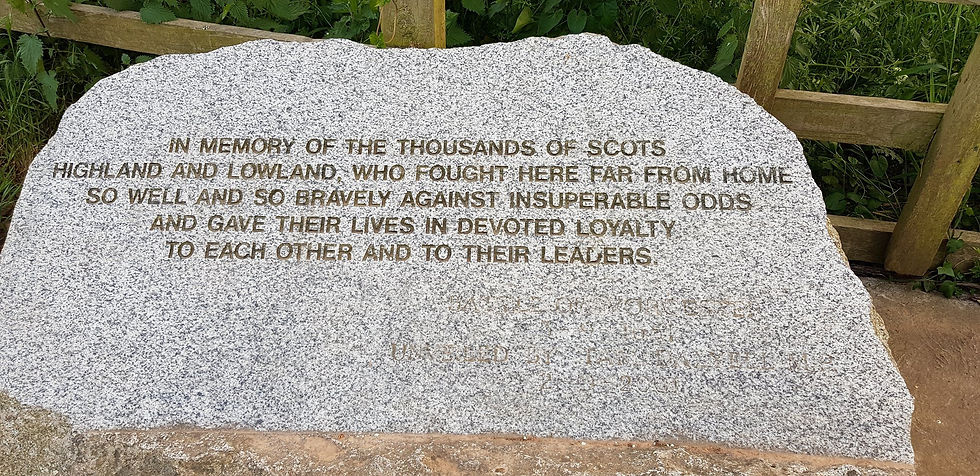
Commemorative stone placed at Powick
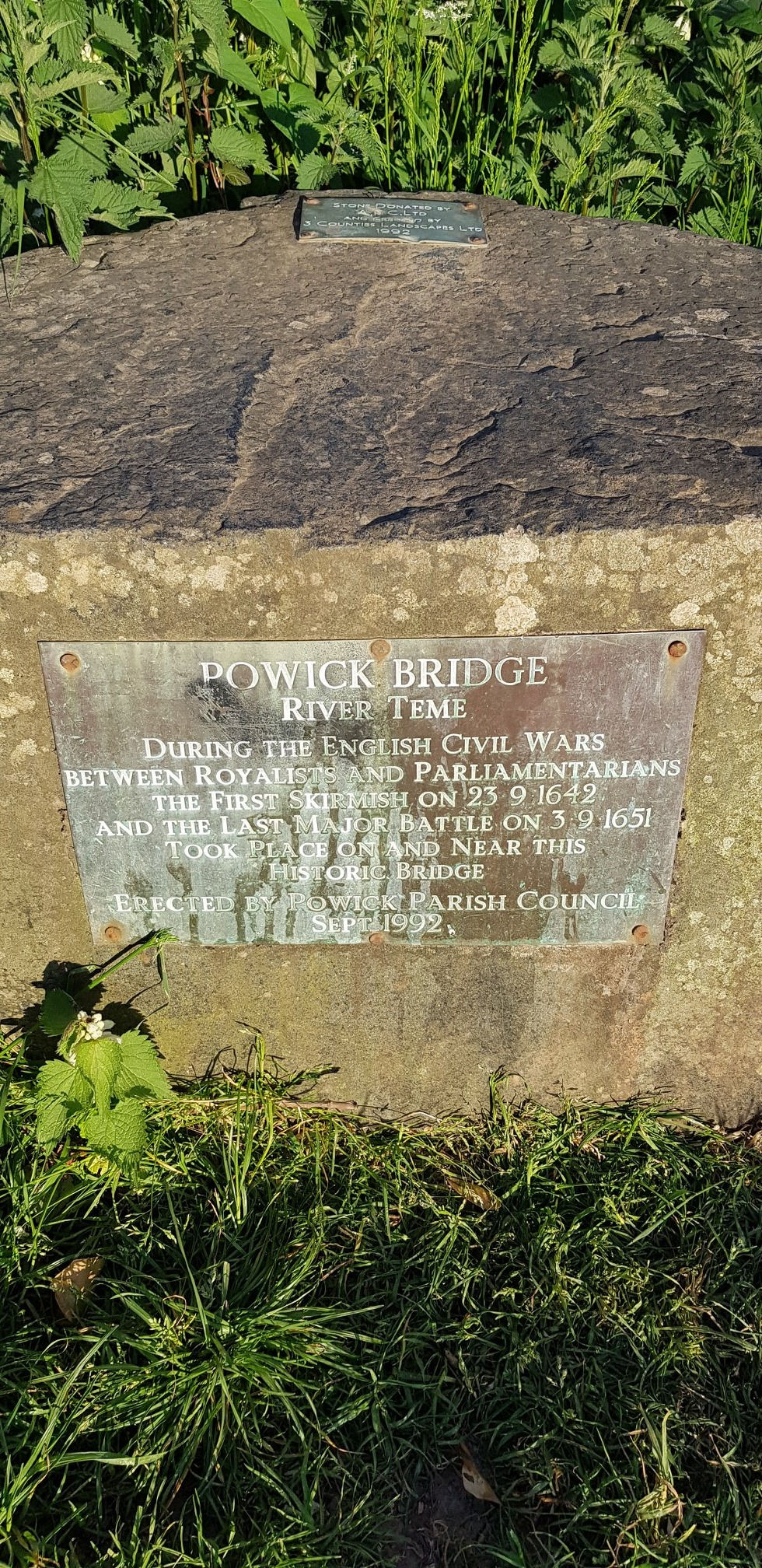
The second commemorative stone to represent the first battle

Prince Rupert of the Rhine - only a badass could get away with wearing that bow

Reenactors playing the Royalist cavalry at their annual battles at Worcester and Powick






Comments